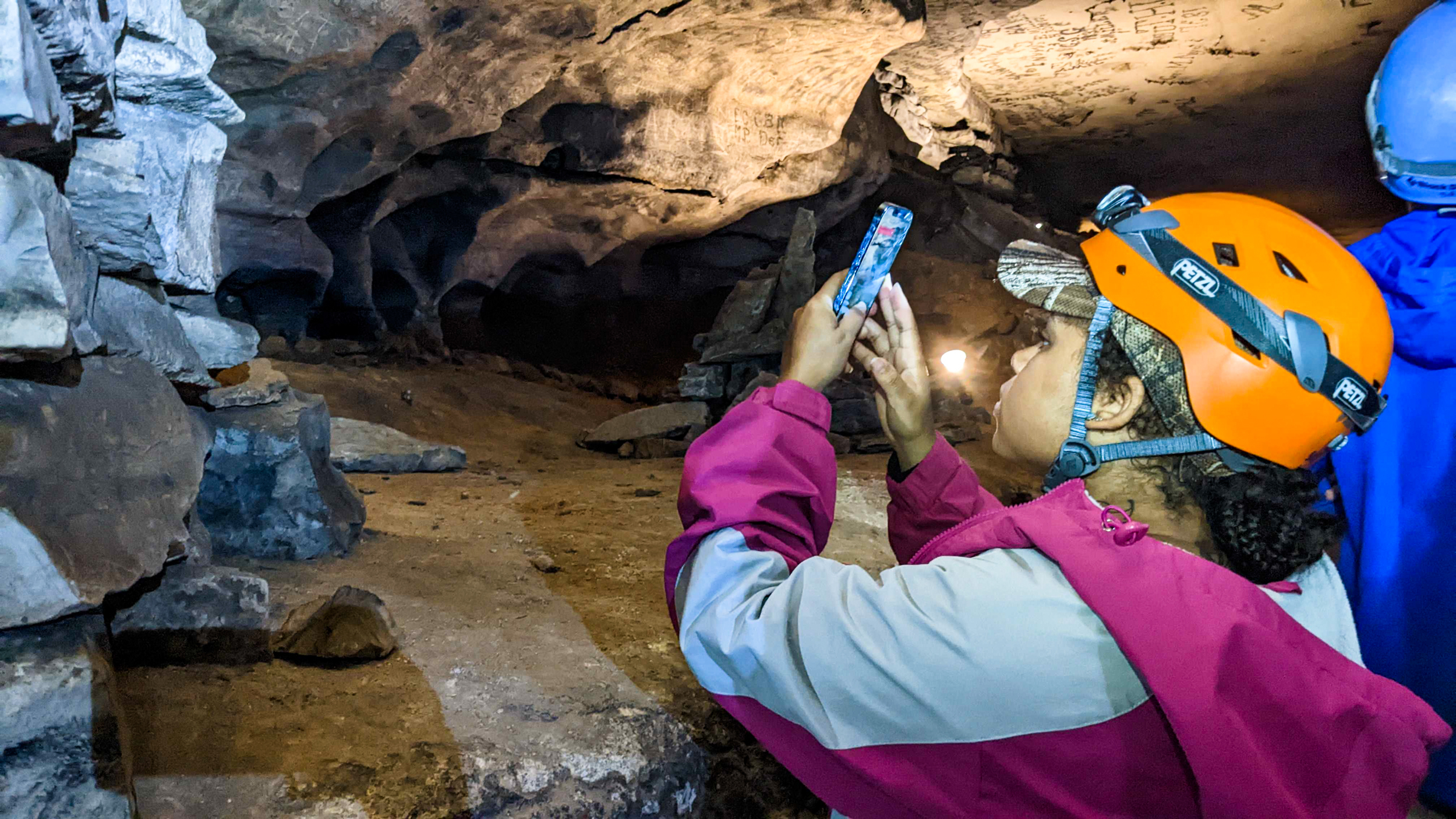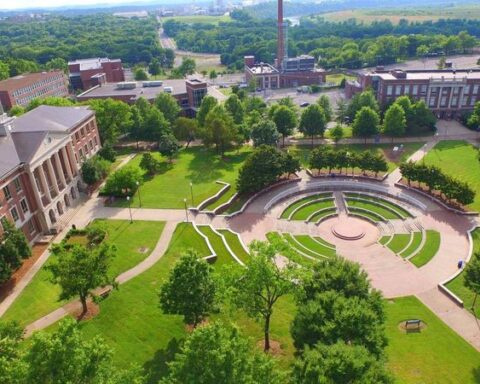By Alexis Marshall
The outdoor recreation industry is overwhelmingly white. A new program at Tennessee State University aims to change that by getting more HBCU students involved in the outdoors.
A MARTÍNEZ, HOST:
Hiking, camping, fishing – the people who participate in these kinds of activities tend to be white. One report found that in 2020, white Americans made up nearly three-quarters of all outdoor recreation participants. It’s a phenomenon known as the nature gap. And a new program for college students is aimed at closing it. WPLN’s Alexis Marshall brings us this report from the depths of a cave in central Kentucky.
UNIDENTIFIED CAVE GUIDE: Right now, we are about 130 feet underground. Oh, by the way, do not fall in the hole.
ALEXIS MARSHALL, BYLINE: It’s mid-November. And a guide is leading us through Mammoth Cave about an hour and a half south of Louisville.
MARSHALL: Descending deeper into the ancient passageways, we flip on our headlamps.
UNIDENTIFIED CAVE GUIDE: This is a crawly passage.
MARSHALL: Folks start to pull up their kneepads and adjust their helmets to army crawl across the cave floor. Blake Wright, a sophomore at Tennessee State University, says this is unlike anything he’s ever done before.
BLAKE WRIGHT: I grew up around suburbs. So I wasn’t in, like, any rural areas.
MARSHALL: This tour for Tennessee State students is part of a partnership between the National Park Trust and the organization HBCUs Outside. The groups provide funding and help build relationships to get more HBCU students involved in the outdoors. TSU is one of four historically Black schools where the program is rolling out.
RON GRISWELL: I wanted just to be a part of elevating and changing the tapestry that’s already extremely rich at HBCUs.
MARSHALL: That’s Ron Griswell, the founder of HBCU’s outside. He says segregation barred many Americans from having equal access to public green spaces and, in turn, created generations of folks who may not feel safe or comfortable in the outdoors.
GRISWELL: A lot of us don’t have the connections like our ancestors did, you know, when we were so tied, you know, spiritually and physically to nature, you know? It’s kind of disheartening.
MARSHALL: That’s why Griswell says reestablishing historic bonds with nature is especially important for Black students.
GRISWELL: I wanted HBCUs to be the first step in not only diversifying the outdoors, but reclaiming these spaces for joy and ushering in a new, diverse population of stewards.
MARSHALL: Stewards like Tennessee State junior Aria McElroy. She’s a student ambassador with HBCUs Outside and organized this trip for her classmates.
ARIA MCELROY: So it was just, like, an opportunity for me and other students to get back outside and, like, rekindle the love that they may have had or just have a new love that they didn’t even know that they had.
MARSHALL: In addition to learning about the rocks and wildlife, guides also tell students about the caves’ sometimes dark history. Native Americans explored it hundreds of years ago and mined gypsum. Many enslaved African Americans were forced to mine the cave for a mineral to make gunpowder. Others were forced to give tours of the cave in the mid-1800s. Here’s Blake Wright again.
WRIGHT: It was a good experience, and learning about what the people used this cave for, what the Native Americans used it for. It was sad to learn how slaves were used to mine in here.
MARSHALL: But Wright says he appreciated the opportunity to experience a part of the country he’d never seen before. Now he says he’s eager to discover other parks and return to this one.
WRIGHT: I want to explore this cave again, just to get another experience, and explore around the cave, like, outside and above, see what the nature has to offer above ground.
MARSHALL: In fact, he says he’s coming back to Mammoth Cave National Park later this semester for a fishing trip.





